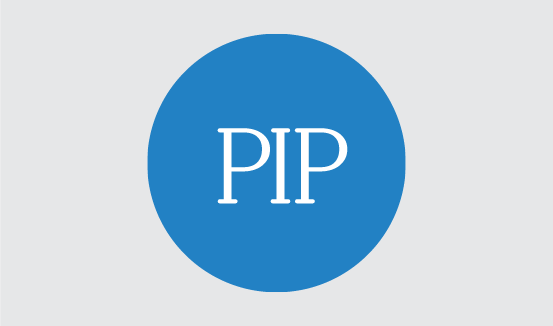Quality Tools and Resources to Assist Your Practice
In an effort to help you and your office staff with the increasing importance and complexity of quality and risk adjustment documentation and coding, HealthCare Partners created some valuable tools.
These tools will assist you and your office staff in reaching your quality and risk adjustment documentation and coding goals while reducing time spent on administrative functions and increasing the time available for patient care.
Annual Wellness Visit Form










 Pediatric Screenings
Pediatric Screenings 



As you know, quality health care begins with an Annual Wellness Visit (AWV). Annual Wellness Visits enable doctors to establish a comprehensive understanding of their patients’ health status, facilitating personalized care plans and promoting overall well-being.
Use our AWV form to document your patients’ well visits and to develop personalized prevention plans to help keep them healthy.
Medical Record Forms & Documentation Requirements
Accurate medical record documentation and coding contribute to improved patient care coordination, effective communication among healthcare providers, quality improvement, and population health management.
Diagnosis Coding Guides & Tip Sheets
These guides will give you and your office staff additional tools for risk adjustment, coding, and documentation. These guides are intended to be used as a reference for frequently documented risk-adjustable ICD-10-CM diagnoses and ensure diagnoses are substantiated within the clinical documentation guidelines.
HEDIS® Coding Guides & Tip Sheets
These HEDIS® guides and tips will give you and your office staff additional resources for coding HEDIS® measures. We provide the current and most frequently used codes that meet HEDIS® requirements, resulting in minimized chart retrievals due to appropriate claims and encounter data submissions.
Behavioral Health Tools
Recognizing the signs of a behavioral health condition is not always easy. We are providing you with the following behavioral health screening tools to help you diagnose and refer individuals for further care. Utilizing these tools when appropriate and submitting the applicable codes will help you to satisfy HEDIS® behavioral health measures.
Patient Experience and Satisfaction - EmblemHealth-HCP Your Behavioral Health Screening Tools Pocket Reference
- EmblemHealth-HCP Behavioral Health Screening Tools Scoring and Action Steps
Patient Health Questionnaire (PHQ)
The purpose of the PHQ-2 is to screen for depression in a “first-step” approach. A PHQ-2 score ranges from 0-6. A score of 3 is the optimal cut-point when using the PHQ-2 to screen for depression. The PHQ-2 inquires about the frequency of depressed mood and anhedonia over the past two weeks. The PHQ-2 includes the first two items of the PHQ-9. Patients who score 3 or greater on the PHQ-2 should be further evaluated with the PHQ-9, other diagnostic instruments, or direct interview to determine whether they meet the criteria for a depressive disorder.Alcohol Use Disorders Identification Test (AUDIT)
The purpose of the AUDIT is to screen and identify excessive drinking and alcohol use disorders. The AUDIT-C is a modified version of the AUDIT Tool.Consumer Assessment of Healthcare Providers and Systems (CAHPS®) and Patient Experience
CAHPS® surveys are used to gather feedback on various aspects of healthcare services to measure and assess the experiences of patients and healthcare consumers with the quality of care they receive. Patients with better care experiences often have better health outcomes. Use these tips to enhance your patients’ experience and learn more about CAHPS®.- The Key to a Successful Practice – Improving the Patient Experience
- Tips for Improving Patient Satisfaction – These important tips can be posted in your office to serve as helpful reminders
- NEW: CAHPS® Survey Questions
- Education Series Webinar: Improving Patient Experience and the CAHPS® Survey
Health Outcomes Survey (HOS)
A Health Outcomes Survey (HOS) is used to assess the impact of healthcare interventions on patient outcomes and quality of life. It aims to measure the effectiveness and success of healthcare services in achieving desired health outcomes from the patient’s perspective.Improving Telehealth Communications
Use these guides as reference tools when conducting Telehealth visits with your patients.- Telehealth Communication Tips for Phone/Video
- COVID-19 Communication: Quick Tips to Connect (ACH)
- COVID-19 Telehealth: Relationship-Centered Communication Skills (ACH)
HCP is working closely with our health plan partners to increase the quality and efficiency of pediatric screenings for children. This guide covers best practices for child screenings within their first 1,000 days of life. Topics covered include identification, prevention, diagnosis, treatment, and follow-up care for lead screening, newborn hearing loss, and developmental screening. As part of this initiative, we are encouraging the use of CPT Code 96110 with a modifier CG or ICD-10 code Z13.41 for developmental screenings, and CPT Code 83655 for lead screenings. Early screening for these conditions is critical to the growth and healthy development of children.
Articles
Find some useful information in these HCPartners in Care articles to support compliance with HEDIS® and CAHPS® measures and to assist you is educating your patients. Learn more about specific topics such as:








